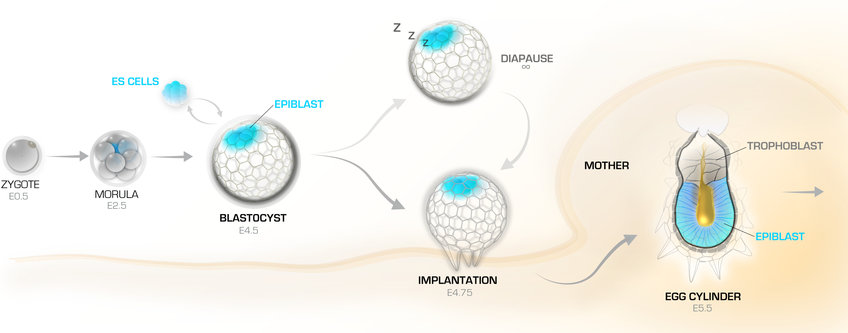Embryonic Self-Organization
Bedzhov Lab
Self-organization of the early mammalian embryo
The genesis of a new organism is one of the greatest miracles of life. In mammals, the fusion of the sperm and the egg takes place in the female reproductive tract. The newly formed embryo starts dividing, increasing in cell number and complexity as it travels through the oviduct. The early stages of embryonic development can be readily recapitulated in a test tube, which has provided the foundation of modern clinical IVF techniques. This also enables the derivation of pluripotent embryonic stem (ES) cells that have the capacity to differentiate into all cell types of the body and hold a great promise for future cell replacement therapies.

At day four and a half (E4.5) after fertilization the mouse embryo reaches the uterus and initiates implantation. In turn, the maternal tissues proliferate and engulf the embryo, making it inaccessible for direct observations and experimental manipulations. Therefore, the mammalian development at the time of implantation is largely unexplored and probably the most enigmatic period of the early embryogenesis. In a very short period of time, just within 24 hours, the hollow shaped embryo (blastocyst) radically changes its appearance, transforming into a tube-like conceptus (egg cylinder). The proper establishment of the egg cylinder is critical as it serves as a foundation of the developing body. The mechanism of the blastocyst to egg cylinder transition is a long-standing mystery and a major focus of our research. Using mouse embryos and ES cells as model systems, we are trying to understand the process of self-organization of the embryonic tissues that dynamically acquire new shapes and functions during implantation.
